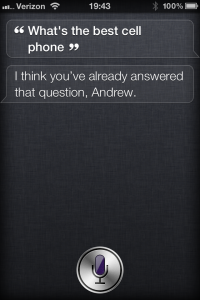So, it’s been a very long time since my last post, but there’s a reason. I started running. Over the next few posts, I’ll share my journey from couch to runner with you.
In February of this year, I decided that, since I wasn’t getting any younger, those dreams of one day doing a marathon would fade fast, unless I got off my butt and did something about it. Having drifted into middle age and a sedentary lifestyle, I’d almost resigned myself to buying new pants every couple of years as my waistline grew, and to being less able as more and more of my body parts gave out on me.
A visit to the doctor for a physical (yes, that one), and a poor showing on my cholesterol levels convinced me that if I didn’t want to add taking statins to the list of ‘stuff that you have to do as you get older’, and staring at 200lb (90 kg) on the scales I knew it was time. So I started to run – it was the only thing I could think of that would really work, and I’d always had that dream of doing a marathon.
So, I did the typical geek thing – bought some apps for my iPhone, bought some hi-tech shoes and a bunch of running gear, got some sport headphones, and got myself down to the treadmill. I nearly died. I couldn’t run for a minute at a time. The app I chose seemed incredibly optimistic – with wildly outrageous schedules, but I stuck to it. Within a few weeks my endurance improved, and I signed up for a run (the Bay Bridge Navy run in San Diego) – 4 miles of nightmare with a mile of steep uphill in the middle. I’d done the same run the year before, with literally no training, and barely made it – walking most of the way on the hills, and barely jogging the rest of it.
The problem was, my shins hurt. Badly. So badly, that I sometimes couldn’t walk afterwards. Three weeks before the bridge run, I was out. I simply couldn’t run anymore. No way I could train. I took almost 10 days off while my shins recovered. I bought new shoes with custom fitted insoles with extra arch support, as apparently my feet were ‘over pronating’ and compression sleeves for my calves.
A week out from the race, I was worried whether I’d even be able to complete it. I avoided the treadmills (one of humanity’s most boring inventions) and hit the roads, running gently in the beautiful city of San-Diego. I managed a 3 mile training run, just.
The shin pain was better with the new shoes and compression sleeves, but still not great – I did the run, but didn’t achieve the time I wanted. I went out too fast (a symptom of rarely running on the roads and not being experienced with setting my pace) and was winded after the first mile – just before the bridge climb. I had to walk most of the way to the summit, then managed to run the last 2 miles – encouraging a straggling colleague on the way. I sighted the finish line, but had nothing left in the tank for a final push, so just kept going and jogged across. I’d beaten my previous year’s time by around 3 minutes. But, I’d finished, and I knew I could do better.
I went back to basics, and I learnt a lot – the next race would be better – but that’s for the next post!
The app I used to get to 5km.
http://heavydutyapps.com/5k-runner/
A little about the Coronado Bay bridge:
http://en.wikipedia.org/wiki/San_Diego-Coronado_Bridge

